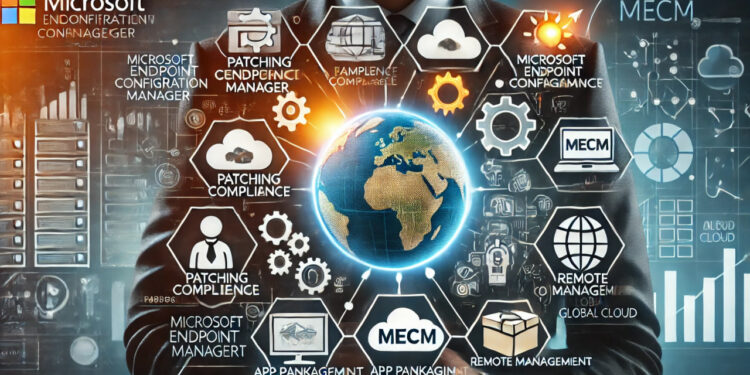In today’s rapidly evolving digital landscape, organizations around the globe are actively moving towards modern management systems. The adoption of cloud-based technologies has surged significantly, especially following the increased demand for remote work and hybrid IT environments. One of the major tools that have emerged in recent years is Microsoft Endpoint Manager (MEM). It integrates several management capabilities under one roof, offering convenience and modernized controls. However, while MEM continues to evolve and gain traction, MECM Microsoft Endpoint Configuration Manager still holds a key position for many enterprises, especially when it comes to maintaining IT compliance and managing application packaging and delivery. This article explores why MECM remains indispensable and how it complements rather than competes with MEM.
The Foundation and Role of MECM in Enterprise IT
Microsoft Endpoint Configuration Manager, commonly known as mecm, has been a cornerstone for IT departments for years. It allows organizations to manage large fleets of devices across different locations efficiently. From patch management and compliance to software deployment and inventory tracking, MECM provides robust solutions that are both secure and scalable.
Unlike newer tools that rely heavily on constant internet connectivity and cloud infrastructures, MECM is designed to function seamlessly in on-premises, hybrid, and even air-gapped environments. This makes it especially suitable for sectors like government, defense, and healthcare, where data sensitivity and regulatory compliance are paramount.
Understanding MEM and Its Role in the Modern Workplace
Microsoft Endpoint Manager (MEM) is essentially a suite that combines Microsoft Intune, Configuration Manager (MECM), Desktop Analytics, and other services into a unified endpoint management solution. MEM emphasizes cloud-driven management and supports modern device provisioning methods such as Autopilot and zero-touch deployment. While this modern approach is appealing, especially for newer organizations or startups, traditional enterprises with a more complex infrastructure often need something more reliable and robust. That’s where MECM steps in to fill the gap.
Why MECM Still Matters Despite the Rise of MEM
Many industry experts initially believed that with the rise of MEM, MECM would become obsolete. However, that is far from the truth. MECM continues to play a critical role in enterprise environments for several key reasons.
First, compliance and regulatory requirements are much easier to handle with MECM. It offers advanced control over patch deployment, status reporting, and system configuration, all of which are necessary to pass stringent audits.
Second, MECM excels in managing software packaging and application delivery. In large organizations, software deployments are not just limited to pushing an application to a device. It involves version control, compatibility testing, rollback mechanisms, and a deep understanding of the system environment. MECM provides all these capabilities in a centralized, streamlined manner.
Moreover, hybrid infrastructures, which combine both on-premises and cloud resources, benefit immensely from MECM’s ability to bridge both worlds. While MEM manages devices in the cloud, MECM ensures that systems located on internal networks are not left out. This ensures consistency across the board and reduces the risk of configuration drift.
Patching and Compliance: Core Strengths of MECM
One of the primary reasons organizations continue to rely on MECM is its ability to manage patching at scale. In a world where cybersecurity threats are more common and more sophisticated than ever, timely patching is not a luxury—it is a necessity. MECM allows IT teams to test patches in controlled environments, schedule deployments during off-peak hours, and monitor compliance in real-time.
Organizations that rely solely on cloud-based tools may face challenges like limited bandwidth, update failures due to connectivity issues, or insufficient control over patching schedules. MECM mitigates these risks by offering full control and visibility at every stage of the patch management lifecycle.
Another significant advantage is the detailed reporting capabilities. MECM provides granular reports on patch compliance, which helps IT managers quickly identify non-compliant systems and take corrective actions before a vulnerability can be exploited.

App Packaging and Delivery: A Specialty of MECM
Managing applications in an enterprise is not just about installing and uninstalling software. It involves testing for compatibility, ensuring proper configurations, meeting security standards, and aligning with organizational policies. MECM offers extensive capabilities in application packaging and delivery that are tailored for these complexities.
From creating custom application packages using PowerShell scripts to deploying complex business applications that rely on legacy frameworks, MECM makes the process smoother and more predictable. Furthermore, MECM supports deployment across various operating systems, device types, and user scenarios—something that’s not always guaranteed with cloud-first tools.
For businesses that need to maintain support for older software or legacy systems while still moving forward with modern solutions, MECM acts as the perfect intermediary.
Scalability and Flexibility with MECM
Scalability is another area where MECM continues to shine. Whether you are managing a few hundred devices or hundreds of thousands across multiple geographies, MECM can scale to meet your needs without compromising on performance or control.
It also offers extensive automation features that help IT teams manage workloads efficiently. Tasks like patch scheduling, application rollout, inventory checks, and even endpoint security can be automated with MECM. This not only saves time but also reduces the margin of human error.
Moreover, MECM supports integration with various third-party tools, extending its functionality beyond what is available out of the box. This flexibility makes it a preferred choice for enterprises with complex IT environments.
Transitioning to Modern Management: Why It’s Not “Either-Or”
A common misconception is that organizations must choose between MECM and MEM. In reality, Microsoft designed these tools to work together. Many enterprises use both platforms in tandem—MECM for managing traditional desktops and laptops, and MEM for mobile devices and cloud-native endpoints.
This hybrid strategy ensures that all devices, regardless of their location or connectivity status, are managed under a unified policy framework. It also allows organizations to transition at their own pace, migrating workloads to the cloud gradually without disrupting ongoing operations.
This coexistence strategy is especially useful during merger and acquisition phases, infrastructure upgrades, or during global expansion when new device types and compliance standards are introduced.
Long-Term Outlook: Why MECM Isn’t Going Away
Despite the cloud revolution, MECM is not going anywhere anytime soon. Microsoft continues to invest in MECM and regularly rolls out updates to improve its performance and capabilities. This commitment shows that the platform is still very much a part of microsoft endpoint configuration manager vision for endpoint management.
For businesses that require a high level of control, customization, and compliance, MECM remains a critical asset. It allows IT teams to operate with confidence, knowing they can adapt to changing requirements without compromising on performance or security.
For more information on how MECM supports patching compliance, app packaging, and delivery in enterprise environments, visit https://www.algiz-technology.com/mecm-for-patching-compliance-app-packaging-and-delivery.
Conclusion
The growing adoption of MEM is a positive step toward modern, cloud-based IT management. However, MECM continues to serve as the backbone of many enterprise operations. From compliance assurance to software deployment and patch management, its capabilities remain unmatched in many scenarios. Rather than viewing MEM and MECM as competitors, organizations should see them as complementary tools that, when used together, offer a comprehensive solution for modern IT challenges. In a world where flexibility, security, and reliability are non-negotiable, MECM remains an essential part of the toolkit for IT administrators worldwide.






